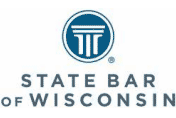3 Critical Facts About Wisconsin Restraining Orders
 An average of 24 people per minute are domestically abused in the United States, including rape, physical violence, and stalking. When domestic abuse occurs, obtaining a restraining order may be essential for safety’s sake. Understanding restraining orders is an important step to taking legal action to protect you, and potentially your children.
An average of 24 people per minute are domestically abused in the United States, including rape, physical violence, and stalking. When domestic abuse occurs, obtaining a restraining order may be essential for safety’s sake. Understanding restraining orders is an important step to taking legal action to protect you, and potentially your children.
Our experienced Wisconsin family law attorney at John T. Fields & Associates, LLC understands the restraining order process and can explain your options in a legal consultation today. Call 608-729-3590 to discuss your restraining order case now.
Four Types of Restraining Orders in Wisconsin Law
A restraining order - or protective order - is a court order issued by a family court judge that enacts restrictions on someone who allegedly committed domestic abuse or other illegal actions that have caused injury. They may also be used when a person’s actions have caused someone else to reasonably fear being harmed. Four types of restraining orders are authorized under the law:
Domestic Violence
Domestic abuse restraining orders are limited to specific relationships, such as current or former spouses, dating partners, or other household and family members. Domestic abuse can include sexual assault, property damage, physical assault, and threats of any of these actions.
Child Abuse
A child abuse action may involve purposeful injuries to minors, child exploitation, or sexual abuse. They may also be used in cases involving emotional and mental harm.
Harassment
This restraining order includes physical acts such as slapping, punching, shoving, or kicking. It also includes stalking, threatening to harm, or engaging in behavior that intimidates and serves no other legitimate purpose.
Individual At Risk
Restraining orders for individuals at risk can be used for people with physical or mental conditions that make them vulnerable to physical abuse, sexual abuse, emotional abuse, and more. These are typically used for adults over 60 and others with mental or physical conditions that limit their ability to care for themselves.
Two-Step Process Involved
Obtaining a restraining order in Wisconsin requires two steps:
Temporary Restraining Order (TPO)
The court issues a TPO quickly if a judge concludes that imminent danger exists. The temporary restraining order stays in place until an injunction hearing, usually within two weeks. However, the TPO may be extended if the court document service on the respondent has not occurred.
Injunction
An injunction is a longer-term action ordered after a hearing at which both sides can offer evidence. In most situations, an injunction lasts up to four years.
Restraining Order Filing Requirements
The restraining order petition must provide the reasons the person wants protection. For example, it should specify the abuse, harassment, or intimidation endured, including dates and as much detail as possible.
Anyone can request a restraining order, and they are especially common in domestic violence and divorce cases. However, eligibility for the order of protection for domestic abuse requires the person to have a specific type of relationship with the other party.
Wisconsin law does not require the person asking for a restraining order to have a family law attorney. However, many domestic violence and divorce cases are highly stressful and frightening, and dealing with the restraining order process alone can be overwhelming without legal assistance.
Contact a Madison, WI Family Law Lawyer Today
Domestic abuse is wrong and terrifying. You should strongly consider a restraining order if you have been domestically abused. A seasoned Dane County, WI family law attorney at John T. Fields & Associates, LLC will explain restraining orders, the process, and the divorce process if you make that difficult decision. If you have questions, schedule your legal consultation today by calling 608-729-3590.









